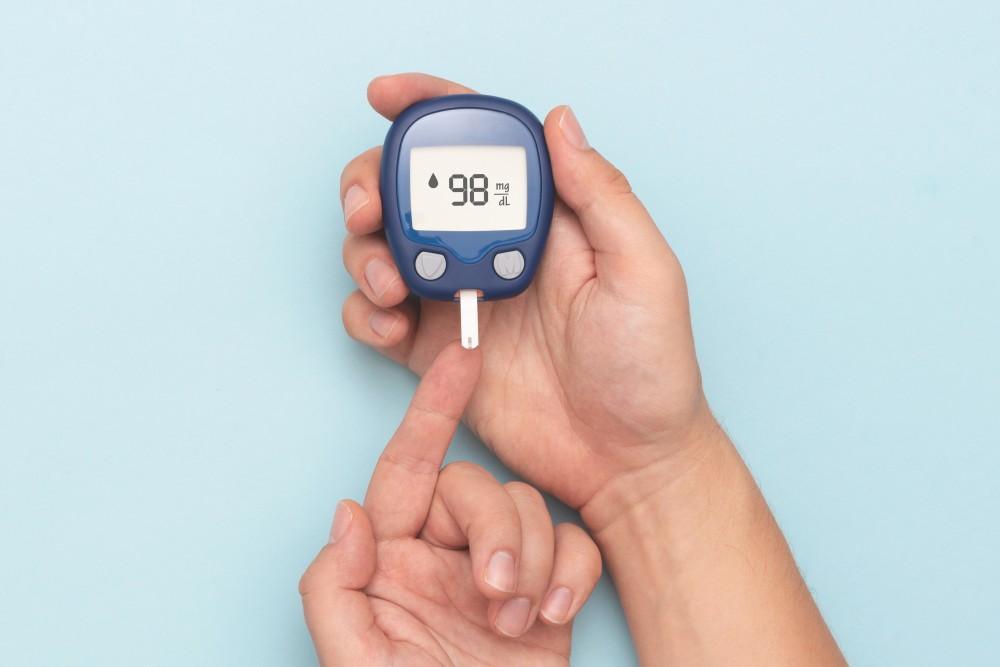What should my blood glucose level be?
Blood glucose, or blood sugar, is a crucial energy source for the human body. It comes from the foods we eat, particularly carbohydrates, which are broken down into glucose during digestion. The body uses glucose as its primary fuel, allowing cells to perform their essential functions. However, to ensure the body operates effectively, blood glucose levels must be maintained within a specific range.
What Are Normal Blood Glucose Levels?
For a healthy individual, fasting blood glucose levels should be below 99 milligrams per deciliter (mg/dL). “Fasting” refers to the state after not eating for at least eight hours, typically after an overnight fast. This level ensures that the body has enough glucose to fuel its activities without overwhelming the bloodstream with excess sugar.
Blood glucose levels fluctuate throughout the day. After eating, blood sugar levels rise as the body absorbs glucose from the food. The pancreas, an organ located near the stomach, responds by releasing insulin, a hormone that helps cells absorb glucose from the blood. As cells take in glucose, blood sugar levels decrease and eventually return to normal. This process is essential for maintaining homeostasis, the body’s balanced internal state.

High Blood Glucose Levels: Hyperglycemia
Hyperglycemia occurs when blood glucose levels are consistently high. This condition is commonly associated with diabetes, a chronic disease that affects how the body processes blood glucose. Diabetes can result from the body’s inability to produce enough insulin or from the body’s cells becoming resistant to insulin’s effects. Without sufficient insulin, glucose remains in the bloodstream, leading to elevated blood sugar levels.
Common symptoms of hyperglycemia include dry mouth, frequent urination, and increased thirst. People may also experience fatigue, blurred vision, headaches, nausea, and weakness. If left untreated, chronic hyperglycemia can lead to severe complications such as insulin resistance, which is when the body’s cells no longer respond well to insulin. This resistance can further progress into type 2 diabetes, a condition where managing blood glucose becomes increasingly difficult.
Long-term complications of uncontrolled diabetes include damage to the small blood vessels that supply the nerves, kidneys, eyes, and other vital organs. For instance, persistent high blood sugar can lead to vision loss, kidney disease, nerve damage, foot ulcers, and even an increased risk of heart attack or stroke. These complications significantly impact the quality of life and can be life-threatening if not properly managed.
Low Blood Glucose Levels: Hypoglycemia
On the other end of the spectrum is hypoglycemia, which occurs when blood glucose levels drop below normal. Hypoglycemia is particularly common in people with diabetes, especially those who take insulin or other medications that increase insulin production. However, hypoglycemia can also occur in non-diabetics under certain conditions, such as after consuming alcohol without eating or as a side effect of certain medications.
Early signs of hypoglycemia include tingling lips, trembling in the hands, a pale face, sweating, a rapid heartbeat, and feelings of anxiety. The brain relies heavily on glucose for energy, so when blood sugar levels drop too low, cognitive functions can be impaired. Severe hypoglycemia can lead to confusion, difficulty concentrating, and in extreme cases, seizures or loss of consciousness. If not treated promptly, hypoglycemia can be fatal, especially in those with diabetes.
The Role of Glucose in the Body
Glucose is a simple sugar that circulates in the blood and serves as the body’s primary source of energy. It is derived from the breakdown of carbohydrates in the foods we eat, such as bread, rice, pasta, fruits, and vegetables. Once ingested, these foods are digested and converted into glucose, which is then absorbed into the bloodstream.
After eating, the pancreas releases insulin to help transport glucose from the bloodstream into the body’s cells, where it is used to produce energy. Any excess glucose is stored in the liver and muscles as glycogen, which can be broken down into glucose and released back into the bloodstream when blood sugar levels drop, such as between meals or during physical activity.
Maintaining balanced blood glucose levels is essential for overall health. For people with diabetes, this often requires regular monitoring of blood sugar levels and careful management of diet, exercise, and medication. However, even those without diabetes should be mindful of their blood sugar levels to reduce the risk of developing diabetes and other related health issues.
Blood Glucose Monitoring
Monitoring blood glucose levels is a critical part of managing diabetes. For those with diabetes, it’s essential to check blood sugar levels regularly, often multiple times a day, to plan meals, activities, and medication doses. This monitoring is usually done using a glucometer, a small device that measures blood glucose levels from a drop of blood.
To use a glucometer, an individual will first set up the device with a test strip and a lancet (a small needle). After washing their hands, they’ll prick their finger with the lancet to produce a small drop of blood, which is then placed on the test strip. The glucometer processes the sample and displays the blood glucose level on its screen. Keeping a log of these readings helps individuals and their healthcare providers manage their diabetes more effectively.
For some, continuous glucose monitoring (CGM) systems offer an alternative. These devices track blood sugar levels throughout the day and night, providing real-time data and alerts for high or low blood glucose levels. CGM systems can be particularly beneficial for those who need more detailed insights into their blood sugar patterns.
Tips for Managing Blood Glucose Levels
Maintaining healthy blood glucose levels involves several lifestyle factors. A balanced diet that includes plenty of fruits, vegetables, whole grains, and lean proteins is crucial. People should aim to eat meals at regular intervals and avoid skipping meals to keep their blood sugar levels stable. Drinking plenty of water, managing portion sizes, and incorporating regular physical activity are also important strategies.
The glycemic index (GI) is a useful tool for choosing foods that will not cause rapid spikes in blood sugar levels. Foods with a low GI are digested more slowly, leading to a gradual rise in blood sugar. Examples include whole grains, legumes, and non-starchy vegetables. On the other hand, high-GI foods, such as sugary snacks and refined carbohydrates, cause a quick and significant increase in blood glucose.
For those with diabetes, it’s especially important to work closely with healthcare providers to develop a personalized plan for managing blood glucose levels. This plan may include medication, insulin therapy, dietary guidelines, and an exercise regimen.
Conclusion
Blood glucose levels play a vital role in overall health. Whether or not you have diabetes, it’s important to keep these levels within a healthy range to avoid complications. For most people, fasting blood glucose levels should be below 99 mg/dL. Monitoring blood sugar levels, eating a balanced diet, staying active, and managing stress are key strategies for maintaining healthy blood glucose levels.
If you experience symptoms of high or low blood sugar, it’s important to seek medical advice, as both conditions can lead to serious health issues if left untreated. By understanding how to manage your blood glucose, you can reduce the risk of developing diabetes and its associated complications, leading to a healthier and more balanced life.



